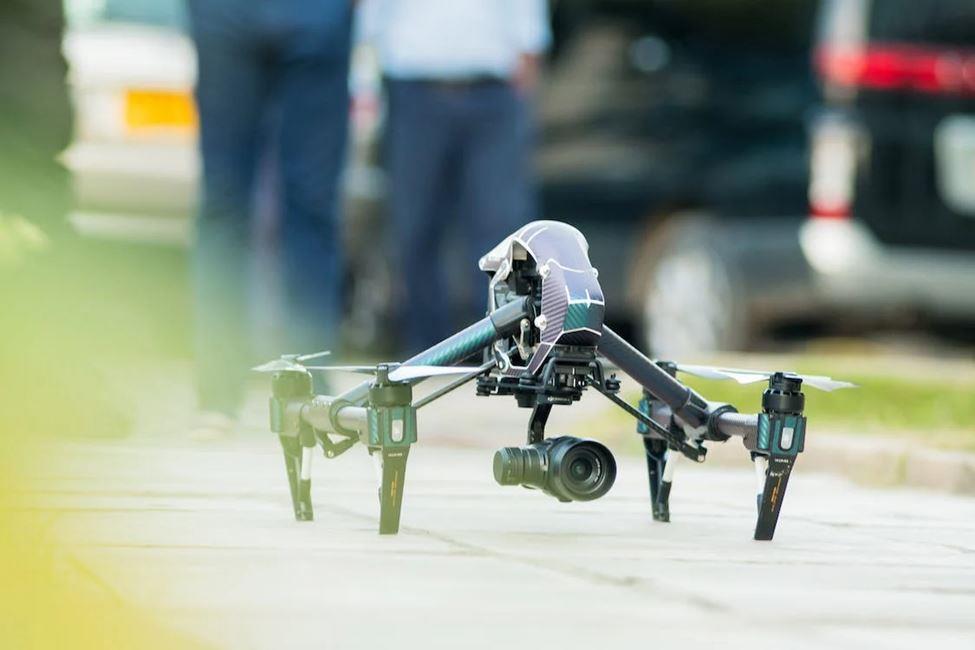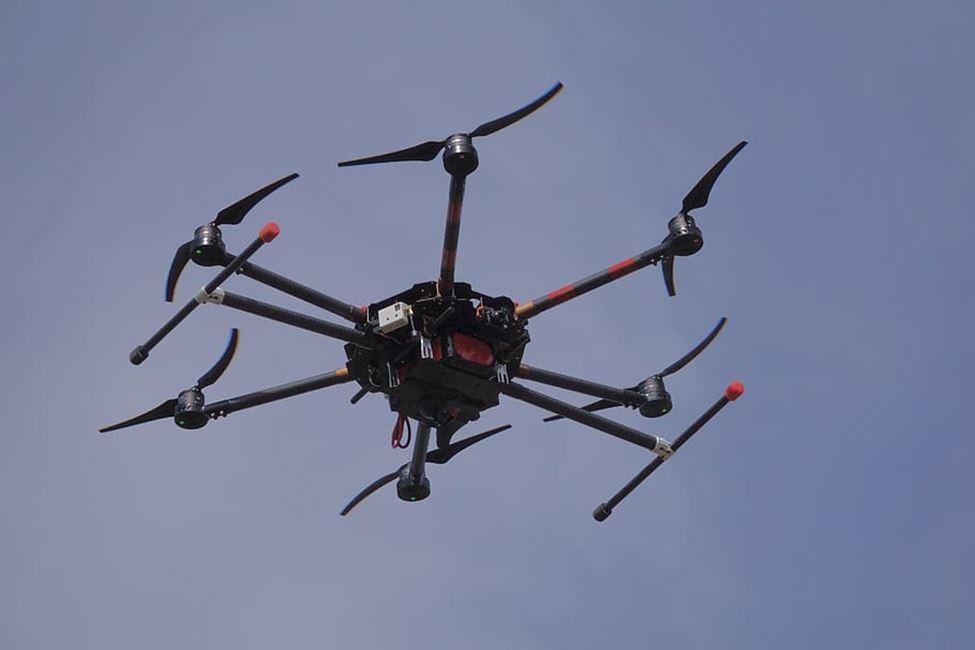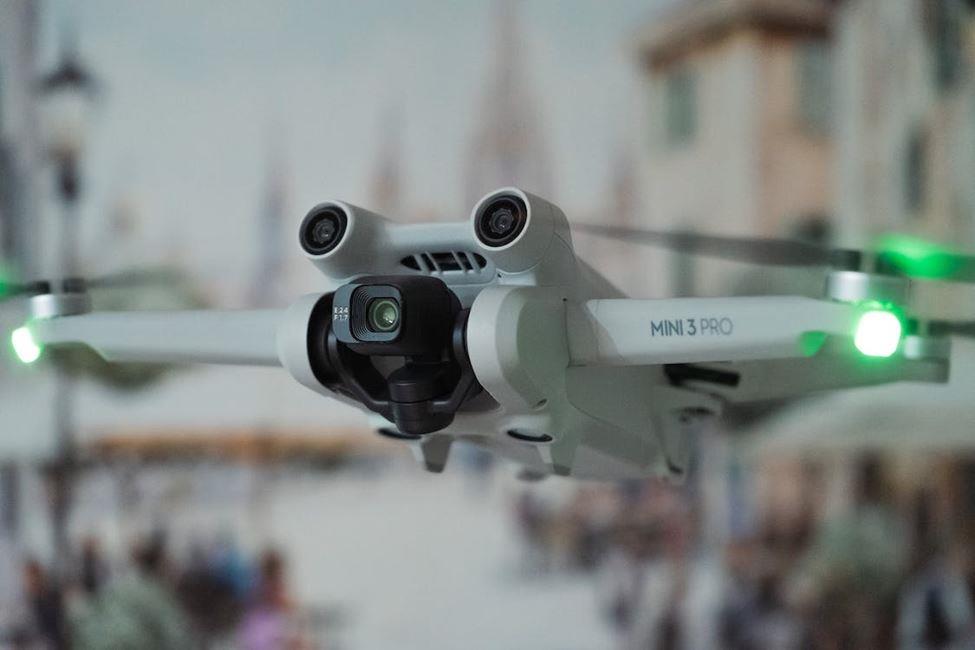
(Source)
There are different types of drones applied across various industries – each with its own typical components and accessories. If you do a simple internet search on the number of these types on the market you see how huge the gadget’s role is getting today. Moreover, in a matter of several years this business skyrocketed, spawning numerous new models and brands.
What is a drone
First of all, it would be prudent to define what a drone is. The word refers to an unmanned aerial vehicle (UAV) – an aircraft capable of flying without pilots onboard, remotely controlled or autopilot. Various classifications of drones exist, grouping them by:
- Structural peculiarities
- Intended use
- Weight properties
- Legal regulations
Types of drones according to their structure
This might be the most important classification since it determines the type of drone. There are two types of drones here:
- Fixed-wing drones
Fixed wing drones are those that take advantage of the aerodynamics of their design and structural features to fly. Their wings do not move and are integrated into the body of the aircraft. The appearance and structure match that of an airplane.
- Rotary-wing drones
Multirotors are the stars of the market due to their versatility and ease of use (if you dedicate some time to flying them). These drones are kept in the air by motor-driven propellers. They are the most stable drones because the geolocation system they have allows them to stay in the exact point of space. This way you don’t have to be continuously correcting their position with the remote control.
Types of drones by number of propellers
Here you can tell which category the drone belongs to with the naked eye. Just look at the propellers.
Tricopters
As its name indicates, this multirotor has 3 propellers. The two front motors rotate in opposite directions, while the rear motor serves as a servomotor giving stability to the flight.
Quadcopters
This is probably the most utilized and most common drone on the market. The 4 motors are arranged in a square, giving the drone great stability during flight.
Hexacopters
Hexacopter drones, as the name suggests, have 6 motors and 6 propellers. Due to the great stability of these drones and the possibility of installing heavier cameras of high resolution, these types are used by large companies. Another advantage, and perhaps the most important, is that if one motor breaks down, it can land without problems with the help of the remaining motors.

(Source)
Octocopters
The octocopters provide the greatest stability. The only drawback could be the difficulty in flying them in small spaces, since the components are heavier and it becomes more difficult to control it.
Coaxial
The defining characteristic of this type of drone is that each arm has at least 2 motors, making it a more powerful type of drone. Thanks to this, coaxial drones can transport objects or ascend with less difficulty and more speed. They are widely used in the professional field to take high quality photographs.
Types of drones according to their use
Drones make our life much easier nowadays. They can be given many tasks, which creates another classification of drones.
Military drones
The first use of drones was military by nature. The unmanned combat aerial vehicles (UCAV) are used in combat or for reconnaissance, but armies can make use of other drones as part of search efforts or to evaluate the damage.
Drones are also used by law enforcement agencies for traffic control and public announcements. The DJI, Sky Hero, Parrot, and JOUAV drones are most commonly used by police units.
Drones for photography and videography
Drones are making our lives much easier. Their implementation across various fields has made it possible to offer a wide range of unique and previously almost impossible services. The most popular civilian application of drones is photography and video recording.
For many pros – photographers and videographers – who got used to having the same perspective and making the same photos, drones have changed everything. The range of possible photos has increased, and the height that the camera can reach makes things even more impressive.
Among the most common services are:
- Private aerial photography and videography;
- Panoramic photography;
- Advertising videos done using drones;
- Event recordings;
- Real estate photography.
Although the use of drones is strictly forbidden in airport areas, airport services themselves have implemented some special types of drones to control birds on the runway. This reduces the probability of accidents.

(Source)
Civil works
- Drones are used to carry out 3D modeling. Photogrammetry allows you to study and precisely define the location, shape, and dimensions of different objects. For this, drones with Lidar (laser imaging, detection, and ranging) sensors or high resolution cameras are used.
- Drones are also helpful in construction of buildings, roads, and bridges – to control the process, estimating earthwork volumes, etc. Real estate companies that want to detail the measurements of a property or land for sale often apply drones as well.
- Transportation of fragile or dangerous materials, which previously meant that a helicopter had to be hired, now is a task for drones. It reduces economic costs and helps avoid endangering human lives.
- The visual inspection of structures such as wind turbines can also be done with a drone. This adds to the cost savings and workplace safety too.
Drones and the environment
Drones can carry different types of cameras – among them are thermographic ones. Thanks to these cameras it is possible to control the state of landfills, closely watching their hot spots and humidity. Protected environmental areas and summer fires also can and should be monitored.
Agricultural drones are used more and more frequently – those stand out for their ability to perform excellent photogrammetry work. These drones facilitate crop field management, making labor more efficient. They can even perform fumigation tasks.
Drones for racing
Known for their small size and high speed, these drones can perform stunning tricks and change their trajectory and speed abruptly, which makes them the perfect choice for recording races. They can follow targets precisely while moving at a considerable speed.
If you are not that familiar with the world of FPV (first person view) drones, with its many accessories and parts, you should look for an FPV drone assembled and ready to fly. DJI Inspire 3 is one of the best high-end drones in this category, but it is understandable that it can be too expensive for now.
Drone types by their propulsion
Drones can be classified by the way in which they are supplied with the energy that makes them able to move. The energy can come through:
- Electric batteries.
- Batteries and gasoline – the way the hybrid drones work. These drones have increased performance: they can stay in the air for longer and carry heavier loads compared to other drones in the same category.
Conclusion
Knowing about all these different types of drones surely helps figure out which one you might need, given your purposes and resources. This industry is immense, and the existing lineups make finding a model that suits you very easy.
Still, even now drones are an emerging technology that keeps changing rapidly, increasing its reach and revolutionizing many industries it’s applied in. It would be perfectly correct to say that as of today, drones stand as a boon to humanity, and especially to the industrial sector in the broad sense of the word.

Marketing Manager at Good Zone Service & Repairs Vitalii Nedzelenko is a marketing manager at Good Zone Service & Repairs, a Brooklyn based store specialized in repairing Apple devices. He is passionate about technology, gadgets, and digital marketing.